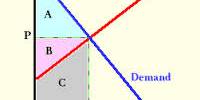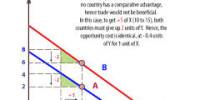Standard Costs explanation with Types
Standard costs are also known as predetermined costs in terms of money, quantity or time as the basis of standard costing. Standard costs are target costs, which should be attained and can be considered as a measuring rod or norms for performance evaluation.
Standard costs are sometimes referred to as preset costs because they are estimated based on statistics and management’s experience. Basically, management calculates how much each step in the production process should cost based on the market value of goods, median wages paid per employee, and average utility rates. This estimated calculated amount is the standard cost. It’s the amount that the company should have to pay to produce a good.
A standard cost can also be developed and used for pricing decisions and cost control even if a budget is not prepared. It is the practice of substituting an expected cost for an actual cost in the accounting records, and then periodically recording variances showing the difference between the expected and actual costs. This approach represents a simplified alternative to cost layering systems, such as the FIFO and LIFO methods, where large amounts of historical cost information must be maintained for items held in stock
Standard costing involves the creation of estimated (i.e., standard) costs for some or all activities within a company. The core reason for using standard costs is that there are a number of applications where it is too time-consuming to collect actual costs, so standard costs are used as a close approximation to actual costs.
Since standard costs are usually slightly different from actual costs, the cost accountant periodically calculates variances that break out differences caused by such factors as labor rate changes and the cost of materials. The cost accountant may also periodically change the standard costs to bring them into closer alignment with actual costs.
Terminology
There are various types of standards in use. Out of these, the suitable standards should be selected for effective cost control. The following are the main types of standards.
- Basic standards: These are standards established considering those factors that are basic in nature and remain unchanged over a long period of time and are altered only when the business operations change significantly affecting the very basic foundations of the entity and nature of busienss.
- Ideas/expected standards: These standards are based on current conditions and circumstances and represents what can be attained with the present setup in place and if the current conditions prevail. Current standards may be set lower or easier then expected standards but good managers always try to achieve what is attainable so that no resource is left unused.
- Attainable standards: These standards are not revised until the cycle has run its full course. This generally results in an incorrect valuation of inventories and consequent errors in the profit disclosed as the inventories are understated in periods of high prices, and overstated when prices are low. Since these standards do not reflect the goals to be attained, they are not often used.
- Historical standards: Basic standards representing a fixed base are used primarily to measure trends in operating performance. Although useful, basic standards must be adjusted before they can be used for performance evaluation purposes. They can be based upon any capacity level that is selected initially to develop the standards.
Information Source:
- www.accountingtools.com
- accountlearning.blogspot.com
















